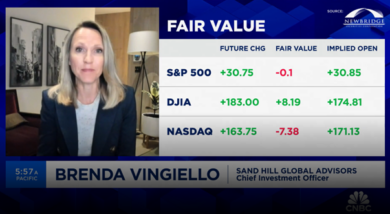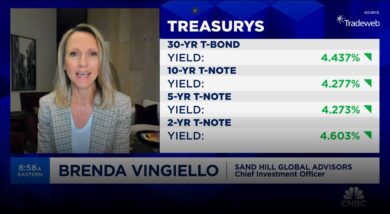“Life imitates Art far more than Art imitates Life.” – Oscar Wilde
In the run-up to this year’s Super Bowl, the New England Patriots found themselves playing defense against allegations tied to whether or not someone had intentionally deflated their footballs in order to improve their ability to grip them. Just as the Patriots spent the start of their year managing the controversy immediately labeled “Deflate-Gate” by the popular press, investors have been deeply mired in their own deflation debate.
Deflation, whether with footballs or consumer prices, is rarely considered a good thing. Trending downward prices tend to result in consumers delaying purchases with the knowledge that “prices tomorrow will be cheaper than they are today.” These delays over time can slow the consumption cycle and establish a downward arc for economic growth. Beyond the obvious concerns over potentially declining growth, investors also associate deflation with the two worst periods for stock market returns in history: the U.S.’s Great Depression in the 1930s and Japan’s Lost Decade in the wake of its real estate and stock market bubbles bursting in 1990.
Questions currently abound on the subject of deflation. Are we seeing strengthening or weakening economic growth trends? Are prices around the world inflating or deflating as a result? And what does this mean for the Federal Reserve’s decision around raising interest rates as the year progresses? While the current consensus opinion is quite diverse, Sand Hill’s view is more concise.
The arrival of deflation in Europe, in the form of falling prices earlier this year, finally pushed the European Central Bank into a large scale bond buying program across the Continent. The combination of these deflationary fears and the aggressive central bank action resulted in the yield on European bonds falling precipitously. For the first time in history, the yield turned negative in some countries, as demonstrated by the 10-year Swiss bond auction at -0.06% during the week of April 9, 2015. Meanwhile, the 10-year German bond (presently yielding under 0.20% as of April 16, 2015) may end up trading below the U.S.’s short-term cash yield rate by the time of this publication, representing its widest divergence from the 10-year U.S. Treasury yield rate since shortly after the Berlin Wall fell. Almost unbelievably, in the Eurozone, only Greece (yes, that Greece) has a higher 10-year yield than the U.S.
Perhaps against that backdrop, it is not surprising that the 10-year U.S. Treasury bond yield is once again under 2%, despite a consensus forecast that the U.S. economy will expand about 3% this year. While current yields act as a headwind to your portfolio returns, by comparison international investors in search of yield see the U.S. as highly attractive, helping to keep U.S. rates low. U.S. inflation data has been in a disinflationary (falling but not negative inflation) trend in general, yet the conversation here is about when the first U.S. rate rise will come, rather than possible further stimulus measures like in Europe. Raising rates in the face of these global trends may seem foolhardy at first blush but we don’t see it that way.
The major difference in the Federal Reserve’s policy versus the European Central Bank’s thinking should be no mystery. Europe, with sky-high unemployment, is worried about deflationary expectations taking root. The U.S., which is close to full employment, can now look past falling prices induced largely by the significant falloff in oil last year, and keep its eye on inflation containment as the labor market tightens. Indeed, we suspect that wage pressure will again influence the domestic inflation landscape before year-end.
That said, there are ongoing complications in initiating rate hikes, including the recent seasonal weakness in the first quarter of the year and an unprecedented divergence in monetary policy worldwide. Further challenges to setting the right interest rate come from a lack of current wage pressure, despite approaching the so-called natural rate of unemployment, and, of course, the widely discussed “secular stagnation” factors such as the impact of technology, globalization and demographic shifts.
So, central banks everywhere are in a tricky position. The Fed now has the tough task of taking away the proverbial “punchbowl,” without spooking the markets and needlessly creating an economic speed bump along the way. But it is clear, after more than 6 years of near-zero short-term rates and 11 years since the start of the last Fed rate rise cycle, that the security blanket of quantitative easing is going to disappear and rates will rise, albeit in the most gradual and shallow rate rise cycle seen in the modern era. The question is – how worried should the stock market be?
One thing history does suggest is that any market pullback tied to the start of a rising rate cycle should be temporary. In 6 of 11 rising rate cycles since 1960, shares were down three months after the first rise. But after six months, shares were up in all but three cases and the average gain was just over 4%. The explanation for this price action is simple enough: rates generally increase when optimism about the economy is rising – and that same optimism tends to push up stocks.
Of course, this time could be different. After all, this particular bull market has accompanied a far less robust recovery period than is normal for the U.S. economy. And while a small rise in interest rates by the Fed should have little actual effect on the economy, the issue is whether or not the markets decide to throw a tantrum over losing their security blanket. Given that valuations have risen, markets are likely to be more sensitive to little things going wrong, like the Fed tightening sooner than investors are prepared for.
This conundrum thus presents the Fed with a problem – it doesn’t want its first rate move to cause a market reaction that puts the economy at risk. It appears that the strategy for dealing with that concern is to embark on a “fits and starts” communication strategy by attempting to get investors to gradually steel themselves for the first increase. By the time it occurs, the increase is old news.
When all is said and done in 2015, this debate around deflation and growth, and corresponding interest rates, will likely be the central narrative of the markets this year. Our view is that while the markets are focused on “Deflate-Gate” at present, the real risk may actually be an inflationary surprise as commodity prices start to percolate and wage pressures build by year-end. You can be assured that Sand Hill will be positioning your portfolios with this theme in mind as the year unfolds. Just like this year’s Super Bowl, market watchers are likely to be surprised by what determines the outcome of the game.
Articles and Commentary
Information provided in written articles are for informational purposes only and should not be considered investment advice. There is a risk of loss from investments in securities, including the risk of loss of principal. The information contained herein reflects Sand Hill Global Advisors' (“SHGA”) views as of the date of publication. Such views are subject to change at any time without notice due to changes in market or economic conditions and may not necessarily come to pass. SHGA does not provide tax or legal advice. To the extent that any material herein concerns tax or legal matters, such information is not intended to be solely relied upon nor used for the purpose of making tax and/or legal decisions without first seeking independent advice from a tax and/or legal professional. SHGA has obtained the information provided herein from various third party sources believed to be reliable but such information is not guaranteed. Certain links in this site connect to other websites maintained by third parties over whom SHGA has no control. SHGA makes no representations as to the accuracy or any other aspect of information contained in other Web Sites. Any forward looking statements or forecasts are based on assumptions and actual results are expected to vary from any such statements or forecasts. No reliance should be placed on any such statements or forecasts when making any investment decision. SHGA is not responsible for the consequences of any decisions or actions taken as a result of information provided in this presentation and does not warrant or guarantee the accuracy or completeness of this information. No part of this material may be (i) copied, photocopied, or duplicated in any form, by any means, or (ii) redistributed without the prior written consent of SHGA.
Video Presentations
All video presentations discuss certain investment products and/or securities and are being provided for informational purposes only, and should not be considered, and is not, investment, financial planning, tax or legal advice; nor is it a recommendation to buy or sell any securities. Investing in securities involves varying degrees of risk, and there can be no assurance that any specific investment will be profitable or suitable for a particular client’s financial situation or risk tolerance. Past performance is not a guarantee of future returns. Individual performance results will vary. The opinions expressed in the video reflect Sand Hill Global Advisor’s (“SHGA”) or Brenda Vingiello’s (as applicable) views as of the date of the video. Such views are subject to change at any point without notice. Any comments, opinions, or recommendations made by any host or other guest not affiliated with SHGA in this video do not necessarily reflect the views of SHGA, and non-SHGA persons appearing in this video do not fall under the supervisory purview of SHGA. You should not treat any opinion expressed by SHGA or Ms. Vingiello as a specific inducement to make a particular investment or follow a particular strategy, but only as an expression of general opinion. Nothing presented herein is or is intended to constitute investment advice, and no investment decision should be made based solely on any information provided on this video. There is a risk of loss from an investment in securities, including the risk of loss of principal. Neither SHGA nor Ms. Vingiello guarantees any specific outcome or profit. Any forward-looking statements or forecasts contained in the video are based on assumptions and actual results may vary from any such statements or forecasts. SHGA or one of its employees may have a position in the securities discussed and may purchase or sell such securities from time to time. Some of the information in this video has been obtained from third party sources. While SHGA believes such third-party information is reliable, SHGA does not guarantee its accuracy, timeliness or completeness. SHGA encourages you to consult with a professional financial advisor prior to making any investment decision.








